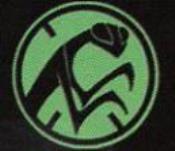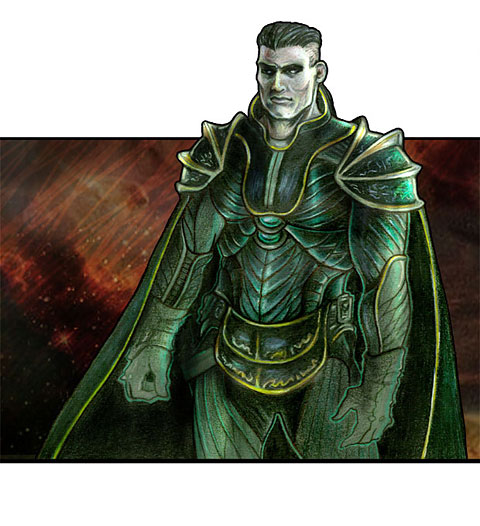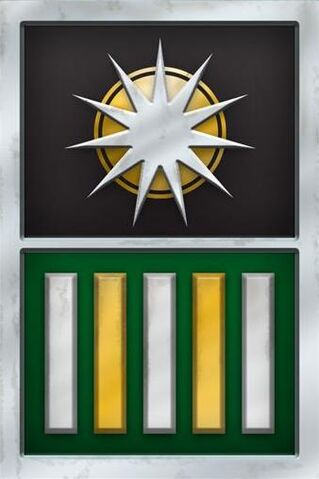Decamper
..!
- Joined
- Jul 28, 2014
- Messages
- 1,159

The Systems’ Assembly has only been in place for thirty years, and is already at risk of completely falling apart as members come to see it as weak, obstructionist, or as a continuation of Sol’s imperial ambitions, even after its defeat in the Second Galactic Civil War. The factions of the Settled Network eye one another across the Bridges, wary of territorial and ideological ambitions, and with Sol reduced to a shadow of its former self, there is no hegemonic power to keep provincial skirmishes in check. Some welcome this period of fractured peace, while others see a vacuum eager to be filled.
Introduction
Beyond the Bridge of Light is a game of war, politicking and resource management taking place in the early years of the 3rd millennium. Players control factions in the Settled Systems, a collection of 50 some systems connected by a web of Bridges, focusing on developing their systems to supply the demands of their population, and to build and maintain a military to either defend their possessions or wrestle away systems from their neighbours.
Signup
Faction Name: Whatever your faction name is. You can do whatever you want, but try to keep in the spirit of the backstory (see below).
Faction Traits: Choose 2: Plutocratic, Revolutionary, Mercantile, Patriotic Fervour, Labour Control, Population Control, Industry Control, Fortress Cities, Terraformers, Universal Military Logistics, Market Controllers, Predatory Industrialists, Civil Defense, Produced Population, Industrial Greenhouses
System Claims: Claim and name up to 4 systems, in descending order of importance. The first system will have high population, development and resources, and second lesser so, and the third and fourth will have less than half that of the first. If you choose less than 4, you’ll get improved systems, but you will still be at an overall disadvantage. State the primary resource and development of each system. There will be some additional randomisation and tweaking to make you sustainable at game start. Resources - Luxuries, Minerals, Fertility. Development - Industry, Agriculture, Administration.
Military: Create one fleet and one army, and indicate in which systems they are stationed. You have three points to put into Cohesion (1 point = 2 cohesion), Attack, Defense, or Mobility. See military rules below for more information.
Commanders: Choose a name and two traits for a rank 2 commander, and a name and one trait for a rank 1 commander, and indicate which unit they are commanding. Traits can be taken multiple time. Traits: Aggressive, Protective, Marcher, Loyal, Rallier, Coordinator, Lone Wolf, Precision Sieger, Scavenger, Pillager.
Faction Description: History or any other background information you want to give your faction, commanders, systems or planets. You can be as creative as you want, but try to fit into the setting. See the below timeline, but in short, try to avoid being Space Italy or Space Japan. Earth has been dead for 500 years, and extrasolar space has been colonised for almost a millennium. While ethno states may exist, today’s ethnicities likely play little part in them. You're free to describe planets in your system's, but try to keep in mind most systems have one 'goldilocks' planet, and that your lesser population systems likely lost over half of that population to the war thirty-ish years ago. Alien life doesn't seem to exist, so all life, from microscopic to plants and animals, is Earth based, though you can be creative with genetic engineering.
Signup Example:
Faction Name: League of the Grand Herbs
Faction Traits: Mercantile, Plutocratic
System Claims:
51 (Basil) - Fertility - Agriculture
53 (Cilantro) - Minerals - Industry
54 (Dill) - Luxuries - Industry
55 (Rosemary) - Fertility - Administration
Military: Fleet - 13th Fleet - 1 Cohesion, 1 Defense, 1 Mobility, Dill
Army - Rosen Ritter - 2 Attack, 1 Mobility, Basil
Commanders: Rank 2 Yang Wen-li, Marcher, Coordinator, 13th Fleet. Rank 1 Reinhard von Lohengramm, Aggressive, Rosen Ritter
Description: The galaxy has had enough hardship, and not enough flavour.
Spoiler Faction and Commander Traits :
Faction Traits
Plutocratic - Can purchase Influence with Capital, 1C for 1I.
Revolutionary - Can create 1 rebel per turn in each neighbouring system.
Mercantile - Can increase Trade Routes to power level 3.
Patriotic Fervour - Can remove one rebel per system per turn for free.
Labour Control - Can exchange Industry, Agriculture and Administration Development points for 10 Influence per point.
Population Control - Can move Pop between systems for free. Over development will be removed.
Industry Control - Can change Goods/Supplies % for free.
Fortress Cities - Can change Industry, Agriculture, and Administration Development into Defense for free. Irreversible.
Terraformers - Can increase System Resource points similar to increasing Development. Increasing a Resource costs the current level*5 capital and supplies.
Universal Military Logistics - Friendly Fleet movement through your systems does not use Mobility.
Market Controllers - Can change the cost of a good on the Galactic Market by 0.25, up or down, once per turn. This occurs AFTER all purchases and sales during the turn.
Predatory Industrialists - Can remove system resource points for bulk resources. Luxury = current resource level *4, Material = current resource level *8, Fertility = current resource level *16
Civil Defense - Every 2 Pop act as 1 Defense when defending against invading armies.
Produced Population - Pop can be built with 20 capital and 10 supplies
Industrial Greenhouses - Goods/Supplies production (not banked or traded) can be converted 1-1 for food.
Commander Traits
Aggressive - +2 to attack
Protective - +2 to defense
Marcher - +2 to mobility
Loyal - *100% base flip cost
Rallier - +4 cohesion
Coordinator - +1 attack and defense to each friendly unit of the same type in the system
Precision Sieger - half damage to system development and population when sieging
Lone Wolf - +1 attack and defense when no friendly units of the same type in the system
Scavenger - +1 Supplies for every point of damage to enemy units
Pillager - +1 capital for every pop and level of development when capturing a system
I'm open to new faction and commander traits. Shoot me a PM on cfc or Discord to brainstorm.
Spoiler Map :

Rules
Stats
Faction Stats
Faction Traits
Each faction starts with two traits that denote some essential part of its culture or government. These traits can be changed with great political effort (100 influence), and new traits can be gained through even larger campaigns (200 influence for 3rd trait, 400 influence for 4th trait). See faction signup for a list of traits.
Resources
Resources are what you will use to develop your systems and build and maintain your military units. There are five main resources
Capital - Gained from population taxation, trade routes, and market trading. Used to build, upgrade and maintain military units, and to buy resources from the market.
Goods - Gained from industry. Consumed by population, .25 goods per pop. If negative, population on systems without enough local goods production will rebel.
Supplies - Gained from industry. Used to build, upgrade, maintain and repair military units, and to increase system development.
Food - Gained from agriculture. Consumed by population, 1 food per pop. If negative, population on systems without enough local food production will starve and die.
Influence - Gained from administration, or having only 1 system. Consumed by population and systems, 1 per pop, 5 per systems over 2 systems. Used to create and pacify rebels, relocate population, exchange and adopt traits, and to train or flip commanders. Can be exchange for currency at a 1-1 rate.
System Stats
Population limit
The population limit of a system is the total of the system’s resources. If pop reaches this limit, pop will cease to grow.
Population
Population generate capital through tax, and set the limit to a system’s development. You can never have a higher total development in a system than the population of that system. 1 pop roughly equals 1 billion people. A pop can be transferred between any connected systems for 10 influence.
Rebels
Rebels represent population who do not support or obey your regime. A rebelling pop will not pay taxes, and will reduce all production in a system by whatever percent of the total population the rebels are (ex 3 rebels in a 15 pop system will reduce all production by 20%). Rebels can be pacified with (20-Admin and Defense development) influence (minimum 5), or by sending an army to suppress them, though this risks damaging development and killing population. Rebels are created by not supplying the required goods and influence for a pop, or by being supported by a neighbouring foreign power. If more than half a system’s population are rebels, new rebels may begin rising up automatically. If a system’s pop is fully rebelling, the system will secede, either becoming independent, or joining a neighbouring faction. Rebels can be created in neighbouring systems for 20 influence divided by the power of the trade route (see trade routes below for more information). This means a blocked trade route blocks the supporting of rebels.
Trade Value
The trade value of a system is determined by its population and goods and food production, with goods production being the most important. See the stats for exact formula, and the trade section below for more information.
Goods/Supplies %
Both goods and supplies production is based off of industry development. You can set what % of your industry is set to producing goods or supplies, with 0 being fully goods, and 1 being fully supplies. Per turn, you can change the value by 0.1 for free, and every additional 0.1 for 10 influence.
System Development
Industry, agriculture and administration produce goods/supplies, food, and influence respectively. To increase a development score, you must pay the current level in supplies. You can increase development as much as you want, paying the next level each time. Ex, to increase agriculture from 4 to 7, you would need to pay 15 (4+5+6) supplies. The total development cannot exceed the population of the system. If population drops low the total development, the required levels of development will be automatically removed with no refund.
While industry and agriculture produce goods/supplies and food multiplied by system resources, one level of administration always produces 5 influence. Administration also reduces the cost of pacifying rebels by 1 influence for every level of admin.
Defense
Defense protects against invading armies, with 1 Defense equalling 1d6 of attack/defense. It must be destroyed before the system can be captured. It also decreases the cost of pacifying rebels by 1 influence for each level of defense.
System Resources
System resources represent the natural resources of the system. The total resources set the population limit of a system. Development * Resources equals the production of goods, supplies and food.
Trade
Trade Routes
Every Bridge (line on the map between two systems) has a trade route, which can produce capital for whoever owns the systems. This could mean one faction gains capital from both ends of a trade route, or two factions evenly share the capital from a trade route. The total value of trade route is the trade value of the two systems * the trade power of the route. The power of a route is by default at 1, and its upper limit is usually 2. It can be increased if both controlling factions consent, or can be decreased unilaterally. Increasing costs 1 influence per 0.02 power, and decreasing costs 1 influence per 0.1 power. Factions can pay for power together if they desire. Conflict in a system will result in the power of all connected trade routes automatically decreasing.
Galactic Market
The Galactic Market is used to sell or buy resources via independent trading companies. Selling prices are 75% that of buying prices, reflecting the large cut trading companies take to cover shipping and storage costs. Prices change depending on how much of a resource players buy or sell.
Bilateral Trade
Factions can directly trade any resource besides influence. To do so, they must either share direct border, or have permission to ship through any intermediary systems.
Military
Units
There are two types of units - Fleets and Armies. They share the same stat blocks, but are used differently. Fleets can engage other fleets, as well as bombard armies and systems’ defenses, but are unable to capture systems. Armies are unable to engage fleets, but can invade and capture systems, engaging garrisoned armies and systems’ defenses. Fleets and armies’ have the following stats:
Damage - how much damage the unit has incurred. If damage is equal to cohesion, the unit is destroyed. Damage reduces the stats of the unit by damage/cohesion.
Cohesion - the size and total strength of a unit. Can represent number of ships/troops, hull strength and system redundancy. If damage is equal to cohesion, the unit is destroyed.
Attack - how effective the unit is at hitting enemy units. Represents targeting systems and overall fire power, and can be interpreted as amount of guns or quality of guns.
Defenses - how effective the unit is at avoiding and deflecting the attacks of enemy units. Represents such things as shields, armour, or point defense.
Mobility - how far a unit can move, and its ability to disengage. Represents engines and logistical support. A unit can move its mobility score in systems per turn.
The combat process is: units attack by order of mobility score. Each unit makes an attack roll (2d6+attack) opposing its target defense roll (2d6+defense), with any attack score over the defense score resulting in damage to the target unit. If a unit suffers more than half its cohesion in damage, it will begin making mobility attempts on its turn (2d6+mobility vs. attack stats of enemy units) which give it a -2 on its attack rolls.
Building, maintaining, upgrading, and repairing a unit
A unit has default costs 10 capital and 10 supplies, and has stats of 2 cohesion, and 1 attack, defense and mobility. Each additional 2 points of cohesion, and 1 point of attack, defense or mobility cost 2 capital and 2 supplies.
Units cost 5+Attack+Defense+Mobility+(Cohesion/2) capital and supplies each turn to maintain. If you can’ meet this payment, your fleets will start taking damage, with one damage per 2 resources it does not receive.
Upgrading a unit costs 2 capital and 2 supplies per 2 cohesion, or 1 attack, defense or mobility.
Repairing damage costs 1 supplies per point of damage.
Commanders
Commanders can be attached to armies and fleets to provide substantial bonuses to their stats and abilities. Commanders are ranked from 1 to 5, and gain ranks by fighting battles. Each rank increases the commander’s effect on its unit, as well as allowing the player to choose a new trait for it. A rank 1 commander with one trait costs 50 influence to hire. Commanders can also be ‘flipped’ by other neighbouring players. By paying the flip cost of a commander in a faction you share an open trade route with, you will acquire that commander. Higher ranked commanders have higher flip costs. Commanders can be transferred between any two units that are within your own or friendly territory at the start of a turn. If a unit is destroyed with a commander leading it, they have a chance of escaping based on their rank.
Sieging and Capturing Systems
To capture an enemy system, it will first need to be cleared of enemy fleets. Once that is accomplished, the system must be cleared of armies and its defense stat must be reduced to zero, after which it can be captured with an army. Fleets can bombard enemy armies and defenses, but risk doing extensive damage to the system’s population and development. Armies will still do damage to population and development, depending on how fierce the fighting is, but much less so than a fleet bombardment. Once a system is captured, a large portion of the population will usually become rebels, but the system will otherwise be fully in the invader’s control.
Split Factions
Due to the length of time communication takes, even with a direct Bridge between systems, splitting a faction by conquering a middle system is fatal to governance and supply lines. If split, a faction will immediately break up into multiple independent factions, with the player taking control of the largest successor faction. In general, the NPC successor’s will immediately attempt to reconnect, but if enough time passes, or if enough rebels are built up in one of the splinter factions, it may be content with its independence. It is always safe to have backup system loops to connect your faction, rather than a single long snake of systems.
Last edited:






